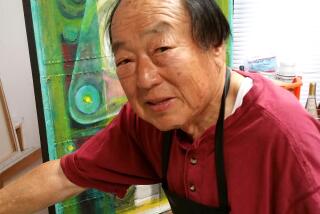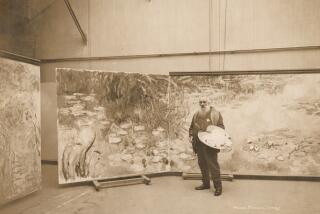Albert Hoxie; UCLA European History Professor
- Share via
Albert Hoxie, 86, influential UCLA history professor whose students included Kareem Abdul-Jabbar. The basketball star wrote in the book “Black Profiles in Courage” that Hoxie “taught me that authentic history was not dry, lifeless facts, but rather the living legacies of real human beings.” Hoxie, born in Adrian, Mich., moved to Beverly Hills as a teenager. He earned a bachelor’s degree from Stanford University and a master’s degree from the University of Wisconsin before serving in the Army Air Corps in Italy during World War II. He lectured at UCLA from 1950 to 1996 and taught European history from 1959 until his semi-retirement in 1982. A world traveler and aficionado of art and architecture, he spent most summers in Europe and often encountered his students while photographing sites in Italy and England. His favorite tribute was having them say they were in Europe because of his classes in Western Civilization. Hoxie also wrote reviews of books about European art for The Times. He left his personal library, slide collection of European art and architecture and a generous monetary endowment to UCLA. On Sunday in Los Angeles of pneumonia.
Goro Yamaguchi; Master of the Bamboo Flute
Goro Yamaguchi, 65, teacher and performer on the shakuhachi, a Japanese bamboo flute. Yamaguchi was tutored in the instrument from the age of 11 by his father, Shiro. The younger Yamaguchi was a professor at Tokyo National University of Fine Arts and Music, the only public university in Japan where traditional Japanese music is taught. One of his songs, “Tsuru No Sugomori (Crane’s Next Lullaby),” was included on Voyager 2, a space probe launched by the United States in 1977, among other messages from the people of Earth. Yamaguchi’s work with the vertical flute helped popularize the shakuhachi internationally, and he was a popular speaker at such events as the World Shakuhachi Festival ’98 last summer in Boulder, Colo. The Japanese government in 1992 designated the flutist a living national treasure for “his achievements in reproducing the original spiritual and philosophical world of shakuhachi.” A frequent performer on radio and television, Yamaguchi cared little for fame. He explained his philosophy by quoting a Japanese poem comparing an artist to a flower: “People may look at me, or they may not. I will still bloom.” On Sunday in Tokyo of heart failure.
Jose Vela Zanetti; Spanish Muralist
Jose Vela Zanetti, 85, Spanish painter best known for his mural at the United Nations headquarters in New York. Born in Milagros, Spain, Vela Zanetti went into exile during the Spanish Civil War after his father was killed by fascist supporters of dictator Francisco Franco. The artist lived in the Dominican Republic, the United States, Mexico, Colombia and Switzerland, producing hundreds of murals wherever he stayed. Best known for paintings of farm workers and rural scenes, he created his most famous work, “La Lucha del Hombre por la Paz (Man’s Struggle for Peace),” at the U.N. The Guggenheim Foundation selected Vela Zanetti to paint the mural in 1952. On Monday in Burgos, Spain, of heart failure after a fall.


